DETROI T MEMOR I ES II
A Pi c t or i a l Hi s t o ry o f t he Ea rly Ye a rs throu g h the 1940 s
Presented byON THE COVER
The end of the assembly line for these 1940 Plymouth Roadkings at the Lynch Road Plymouth Plant.

A Pi c t or i a l Hi s t o ry o f t he Ea rly Ye a rs throu g h the 1940 s
Presented byThe end of the assembly line for these 1940 Plymouth Roadkings at the Lynch Road Plymouth Plant.
The following organizations have contributed greatly to this project:
Photos curated by BRAD FENISONCOPYRIGHT © 2018 BY DETROIT FREE PRESS • ALL RIGHTS RESERVED • ISBN: 978-1-59725-795-4 NO PART OF THIS BOOK MAY BE REPRODUCED, STORED IN A RETRIEVAL SYSTEM OR TRANSMITTED IN ANY FORM OR BY ANY MEANS, ELECTRONIC, MECHANICAL, PHOTOCOPYING, RECORDING OR OTHERWISE, WITHOUT PRIOR WRITTEN PERMISSION OF THE COPYRIGHT OWNER OR THE PUBLISHER. PUBLISHED BY PEDIMENT PUBLISHING, A DIVISION OF THE PEDIMENT GROUP, INC. WWW.PEDIMENT.COM. PRINTED IN THE UNITED STATES.



This city, this amazing city, is filled with the memories of millions of people who for more than three centuries have come here for a brighter future, freedom from racism, poverty, neglect and sorrow, and jobs.
This city, Detroit, was born as a gateway to a new continent and the Great Lakes, first settled by native nations then declared an outpost by the French in 1701, lost as spoils of war to the British six decades later, and won through revolution by the Americans.
When you celebrate Detroit, each of you has a special memory: maybe right field at Tiger Stadium, maybe the Ford Rotunda before it burned, maybe evenings on Belle Isle when humid summer nights sent scores of families there because air conditioning was rare—even more so a hundred years ago, or longer.
Maybe your memories are of high school life at Denby or Mumford, or of a certain parish where you spotted a special someone in the next pew. Maybe your memories are only of the east side, or limited to the west side, or somehow confined to the north end, long before the freeways brought these neighborhoods together.
The touchstone for those memories was likely a photograph, sometimes faded or grainy or torn around the edges—a picture that showed the neighborhood where your great-great grandma lived or where your dad’s uncle worked.
We will look at many pictures in this book that trace our beloved city back to just after the Civil War and through World War II.
As you read, remember this: Detroit was smaller than most eastern cities 150 years ago. It was famed for trees and parks, boulevards, and diverse businesses from stove manufacturers to cigar makers. But within a couple generations, the city became the juggernaut of twentieth-century America and was celebrated for the automobile. Immigrants surged to the city and the population—and the city’s boundaries—ballooned from 79,000 in 1870 to 1.6 million in 1940 when Detroit was the nation’s fourth most populous city.
And when world war came again, Detroit nearly overnight became the Arsenal of Democracy—the American city where war’s weapons were made, from tanks and jeeps to bombers and bullets.
Detroit’s story is certainly one told by the street scenes, celebrations, and buildings we’ll see in the pictures on the following pages. But that story is only brought to life through the memories we cherish and share for this city we hold dear, this city we call home. Now, bring this book to life.



As Union soldiers returned home to Detroit after the Civil War, they would see their town in two generations grow from a quiet provincial city to the birthplace of the American automobile industry.
Commerce in Detroit flourished in those promising late nineteenth-century years. Detroit was a gateway harbor to the Great Lakes and to the East Coast, so the city saw shipments of iron ore and lumber, the great natural resources of Michigan and the upper Great Lakes.
In 1879, the city bought the then-700 acre Belle Isle for $200,000 from its owners, various members of the Campau family. It was the city’s first major park.
Detroit became a center for skilled labor—workers produced stoves, rail cars, and engines. The city developed as a progressive political center, too, electing in the 1890s Hazen S. Pingree its mayor, considered by historians among the best in US history.
Workers also made cigars and packaged seeds. Detroit in the late nineteenth-century was the seed capital of America, thanks largely to D. M. Ferry. By the turn of the century, Ferry’s six-story headquarters downtown took up a block at Brush and Lafayette. Four hundred people worked at the main warehouse. They mailed seed packets to more than 80,000 merchants across North America. In 1883, according to historian Silas Farmer, Ferry mailed out 50 million packages of seeds.
Detroiters were accumulating wealth and wanted to display it. Soon there would be an art museum, an opera house, a skyscraper (10 stories!), and elegant housing in Indian Village and Boston Edison neighborhoods.
Construction of Grand Boulevard began in 1884, a street to run from West Jefferson to East Jefferson by Belle Isle—11.3 miles around the city proper. And the housing along it was expected to be among the city’s best.
During the 1880s, the city expanded east as developers drained marshlands east of today’s Waterworks Park and areas of the Grosse Pointes.
In 1888, the Museum of Art, forerunner of the Detroit Institute of Arts, opened at Jefferson and Hastings. Among the paintings given to the new museum was Spiritual Betrothal of St. Catherine of Alexandria with the Infant Jesus, a painting donated by Pope Leo XIII. The museum still has that work of art, in storage.
In the last decade of the nineteenth century, Detroit had grown into a city of people proud of owning homes. That pride led Detroit into the twentieth century as one of the top US cities for homeownership. It also meant apartment buildings, so common in big eastern cities, would be rarer in Detroit.
And then on March 6, 1896, Charles B. King, 29, drove his engine-powered automobile on Detroit streets—a first. Three months later, on June 4, Henry Ford, 32, drove
his first quadricycle on Detroit streets. It was too large to get out of his Bagley garage, so he had to smash a wider opening in the door.
Here’s how the Detroit Free Press reported a sighting of a quadricycle on Detroit streets that year: “A motor carriage has made its appearance on the streets, and it created quite a sensation as it ran up Woodward Avenue yesterday. It was in perfect control of its driver and ran very rapidly. There was no sound except a quiet clicking, and as it went up the avenue, dodging pedestrians and winding in and out of the crowds that were on that street at noon, there was considerable amount of comment as to the construction of the wagon.”
Soon, talk about the “wagon” became major curiosity. People talked about the progress Ransom Olds, Henry Ford, and others were making with the horseless carriage. Soon, what was shared between friends and chatted about over fences became a roar across the region.
By 1900, the city’s population hit 285,704—3.5 times the population just 30 years earlier. As boats and trains continued to cut the travel time from weeks to days, people came to Detroit from the east, the south, and abroad for work and to live a better life.
That was a Detroit motto by 1900: Detroit, where life is worth living.
OPPOSITE: A crowd gathering in front of city hall to watch Detroit’s Evacuation Day Parade, 1896. Evacuation Day celebrates the arrival of United States troops under the command of General Anthony Wayne and the withdrawal of the British garrison in 1796. COURTESY DETROIT PUBLIC LIBRARY / #EB02D729
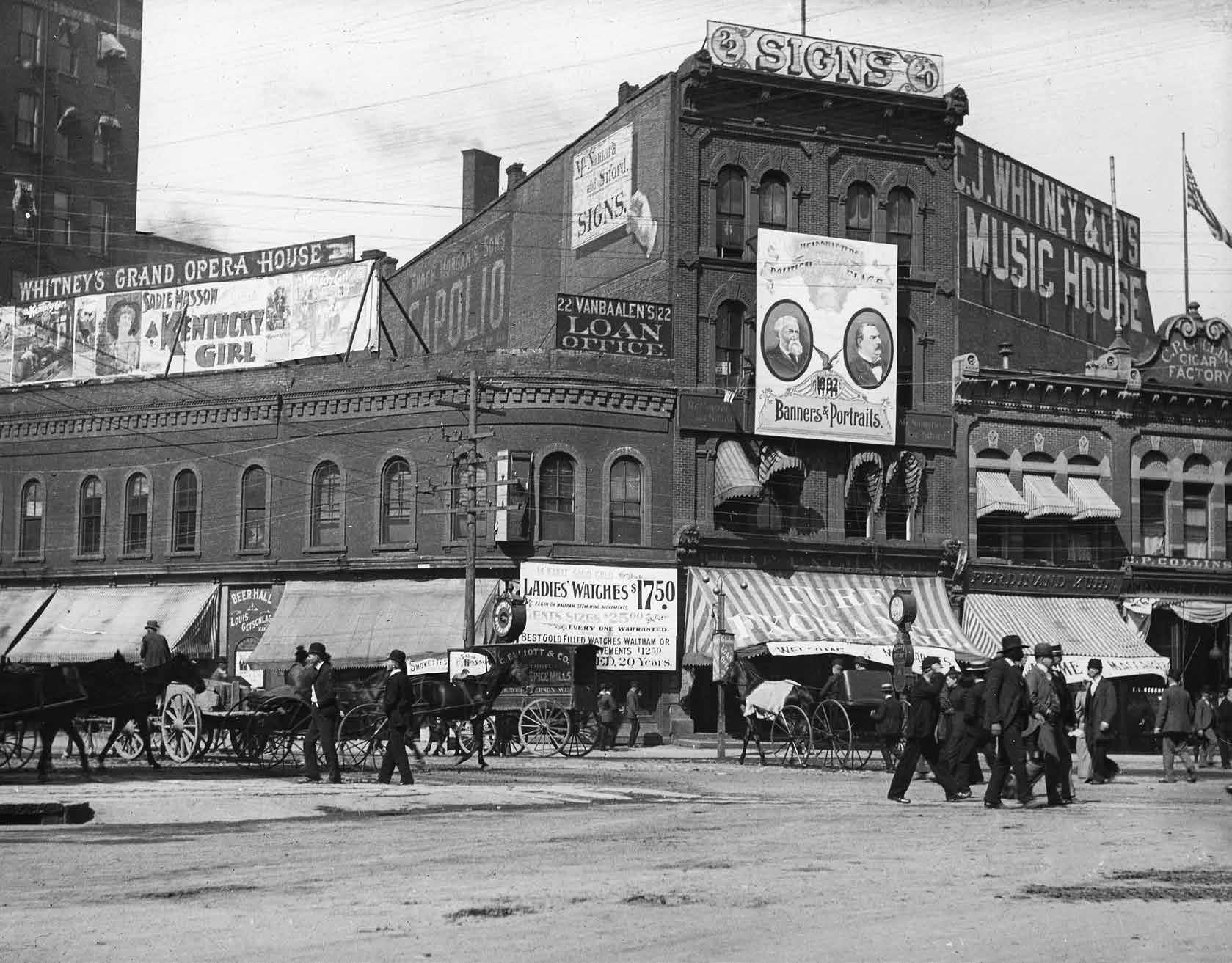
ABOVE: Triumphal Arch on Woodward Avenue erected for a celebration of the Grand Army of the Republic in 1891. COURTESY DETROIT PUBLIC LIBRARY / #EB02C213

ABOVE LEFT: Michigan Avenue with Detroit City Hall in the distance, circa 1890. COURTESY DETROIT PUBLIC LIBRARY / #EB02E503

OPPOSITE: Businesses at Michigan Avenue and Griswold Street, including C. J. Whitney & Co.’s Music House, circa 1890.
COURTESY DETROIT PUBLIC LIBRARY / #EB02C288
LEFT: A young girl followed by a group of women lead the Grand Army of the Republic members in a parade down Jefferson Avenue, circa 1891.
COURTESY DETROIT PUBLIC LIBRARY / #EB02C388
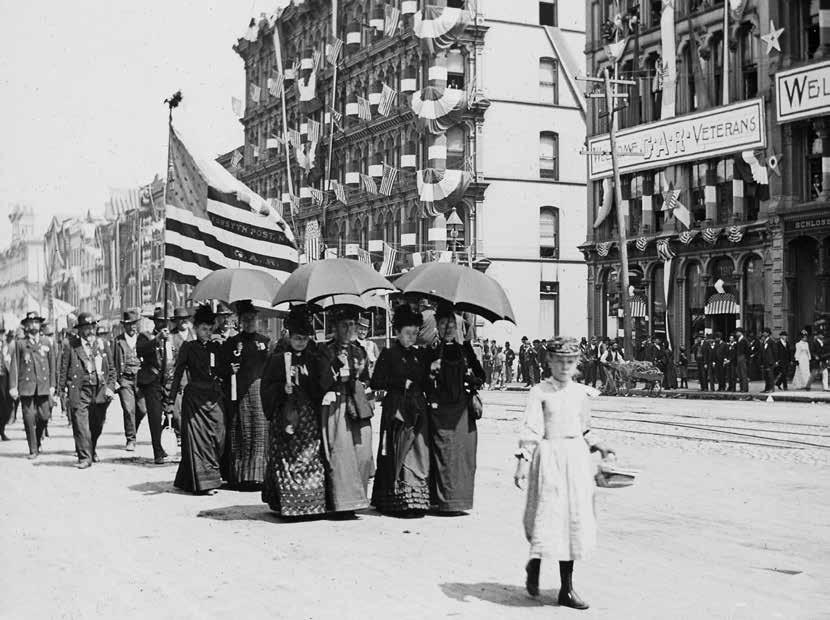
ABOVE: Cadillac Motor Car Co. employees in front of the plant, circa 1910.

COURTESY LIBRARY OF CONGRESS, PRINTS & PHOTOGRAPHS DIVISION, DETROIT PUBLISHING COMPANY COLLECTION / #LC-DIG-DET-4A26763

RIGHT: Library Park at the corner of Gratiot Avenue and Farmer Street, circa 1910.
COURTESY LIBRARY OF CONGRESS, PRINTS & PHOTOGRAPHS DIVISION, DETROIT PUBLISHING COMPANY COLLECTION / #LC-DIG-DET-4A19306
ABOVE: Six-month-old Loraine Elizabeth Stone in the early 1900s.

COURTESY CHARLES H. WRIGHT MUSEUM OF AFRICAN AMERICAN HISTORY
ABOVE LEFT: Men in a Chalmers car during a Chalmers factory tour for representatives of Carl H. Page & Company, 1911.

COURTESY DETROIT PUBLIC LIBRARY / #NA019862
LEFT: Electric cars lined up on Fort Street next to the Bagley Memorial Fountain, circa 1910. COURTESY DETROIT PUBLIC LIBRARY / #NA019099

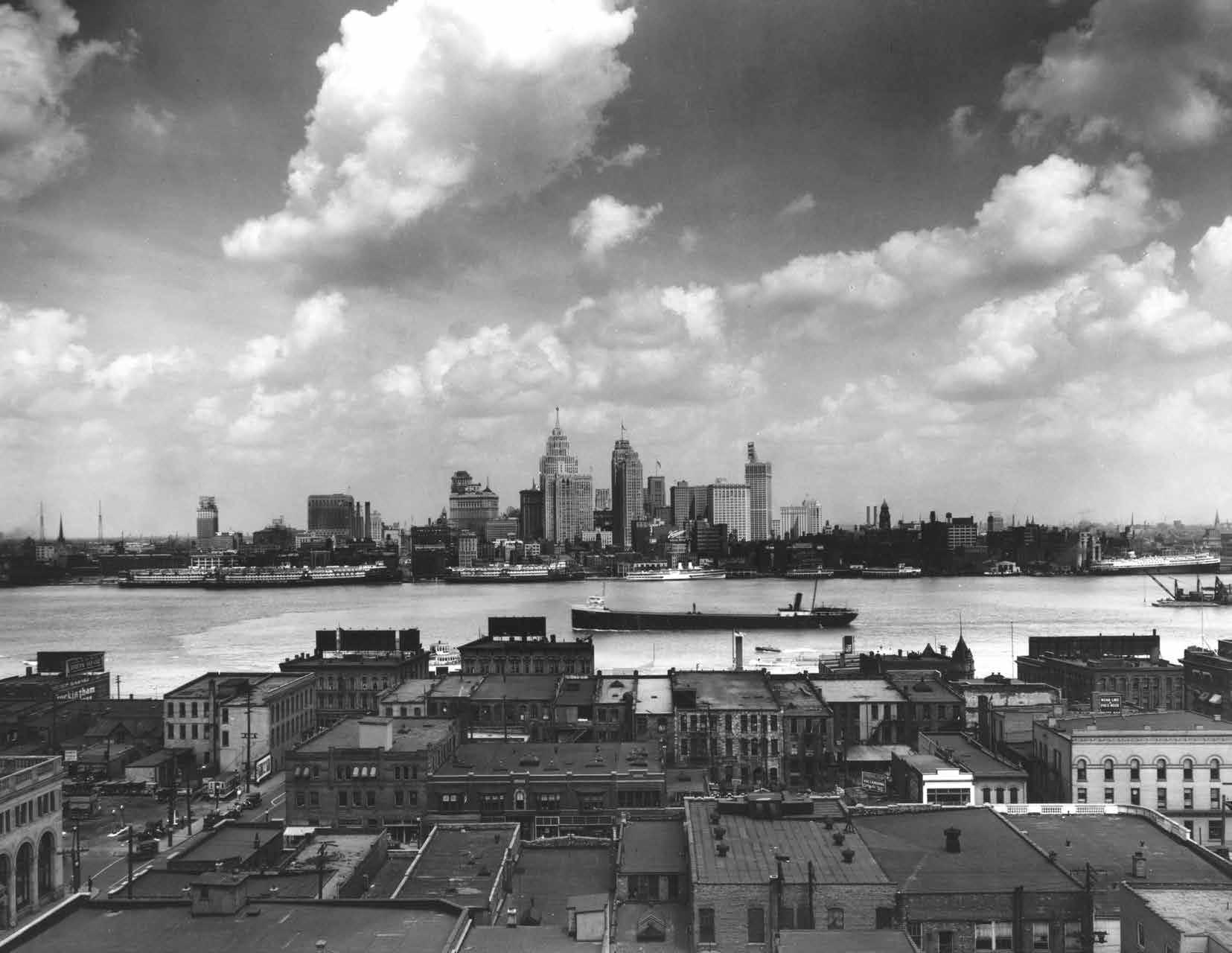
LEFT: Dunbar Memorial Hospital’s medical staff, trustee board, and corps of nurses standing on the steps of the hospital, September 14, 1930.
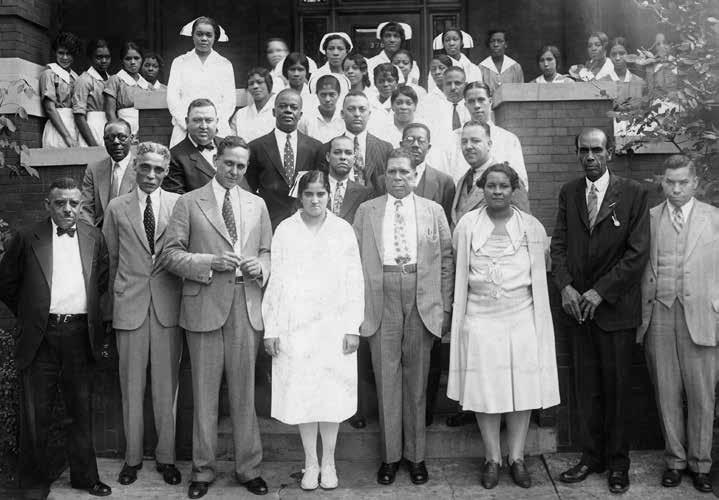
COURTESY DETROIT PUBLIC LIBRARY / #HCJ051
OPPOSITE: Detroit skyline and boats on the Detroit River as seen from Windsor, Ontario, Canada, circa 1929. COURTESY LIBRARY OF CONGRESS, PRINTS & PHOTOGRAPHS DIVISION / #LC-DIG-PPMSCA-15308
BELOW LEFT: Boats at the Detroit Yacht Club, circa 1930. COURTESY DETROIT PUBLIC LIBRARY / #BH004442

BELOW: Men at work inside a large diameter sewer tunnel under Pennsylvania Avenue on May 13, 1929. Two workmen are tending to a grout pump while the third is standing on scaffolding, pumping grout into overhead joints in the tunnel wall.
COURTESY DETROIT HISTORICAL SOCIETY / #2016.067.003
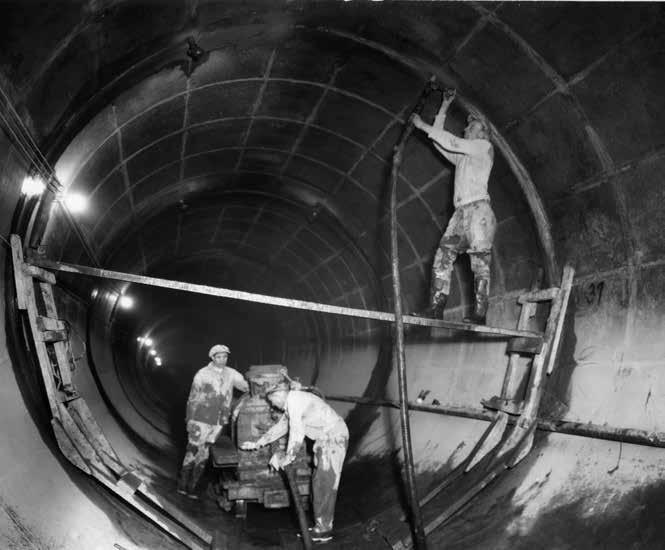
RIGHT: A steady stream of army trucks receive important finishing operations along this section of the production line at the Chrysler Corporation Dodge truck plant in 1942.
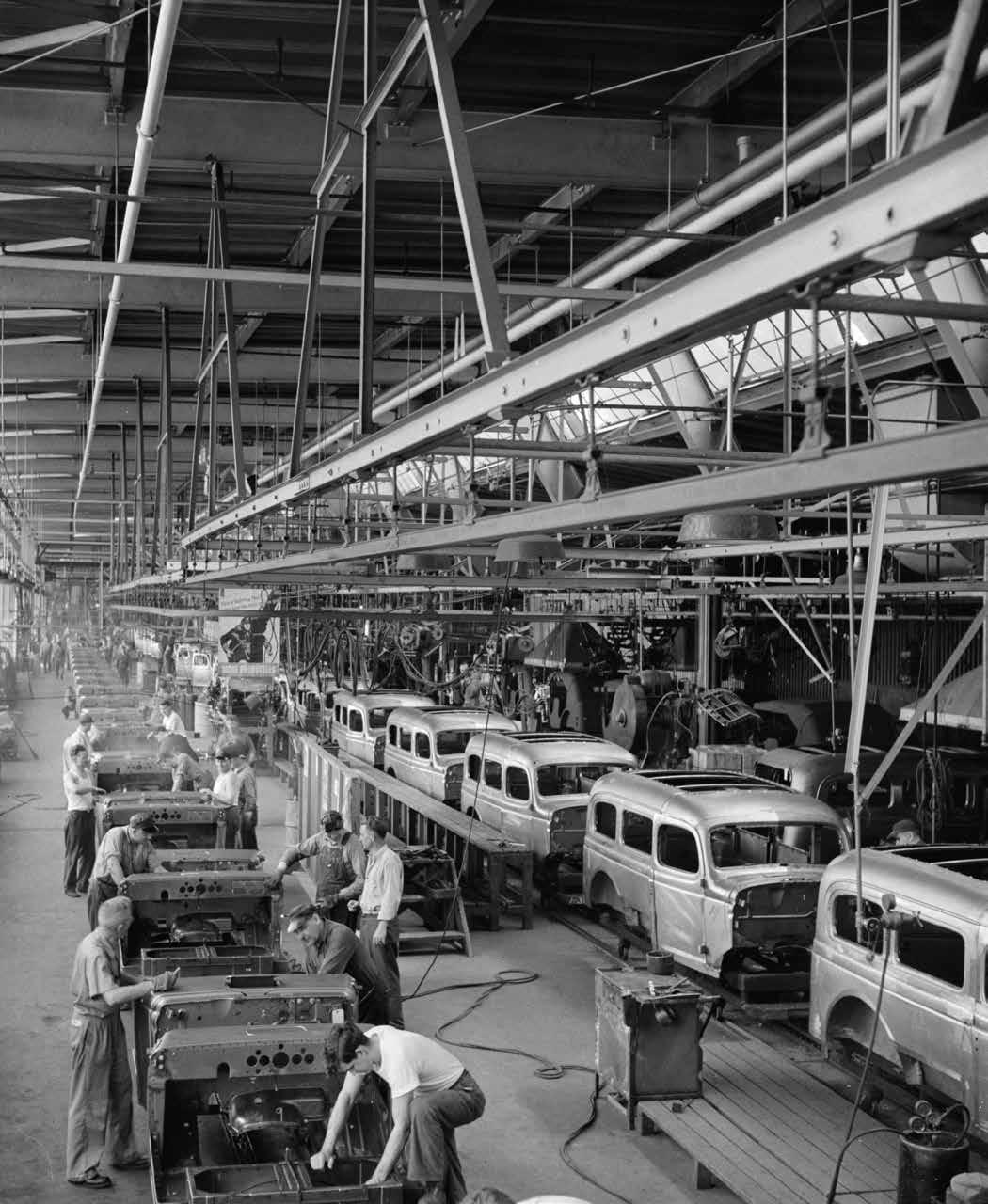
COURTESY LIBRARY OF CONGRESS, PRINTS & PHOTOGRAPHS DIVISION / #LC-DIG-FSA-8D21873
BELOW: Some of the thousands of Dodge army ambulances lined up for delivery to the US Army at the Chrysler Corporation Dodge truck plant in 1942.
COURTESY LIBRARY OF CONGRESS, PRINTS & PHOTOGRAPHS DIVISION / #LC-DIG-FSA-8D07841

LEFT: Workers in a former automobile plant of the Chrysler Corporation at Highland Park are machining the firing end of a 40 millimeter anti-aircraft gun barrel for the US Army in 1942.


COURTESY LIBRARY OF CONGRESS, PRINTS & PHOTOGRAPHS DIVISION / #LC-DIG-FSA-8E11021
BELOW LEFT: Workers at the Chrysler Corporation Highland Park plant producing 40 millimeter anti-aircraft gun barrels in a former automobile plant, circa 1942. COURTESY LIBRARY OF CONGRESS, PRINTS & PHOTOGRAPHS DIVISION / #LC-DIG-FSA-8E11028
BELOW: Gertrude Leuchtenberg and two friends eating ice cream by White Lake Road in Clarkston, circa 1942. COURTESY LARRY BOHNER,
 PHOTO BY LAWRENCE BOHNER
PHOTO BY LAWRENCE BOHNER
ABOVE: Roller skater Melva Block, United States Women’s Skating Champion, Senior Division, would make her screen debut in the new Metro-Goldwyn-Mayer Technicolor production Private Miss Jones in 1943. The 18-year-old star of Detroit amateur skating shows was the youngest to ever hold the skating title, and the only woman to ever win it two successive years. Private Miss Jones included a cast featuring Kathryn Grayson, Gene Kelly, Jose Iturbi, Mary Astorm, and John Boles. It was directed by George Sidney, and produced by Joseph Pasternak. COURTESY DETROIT PUBLIC LIBRARY / #HR005566
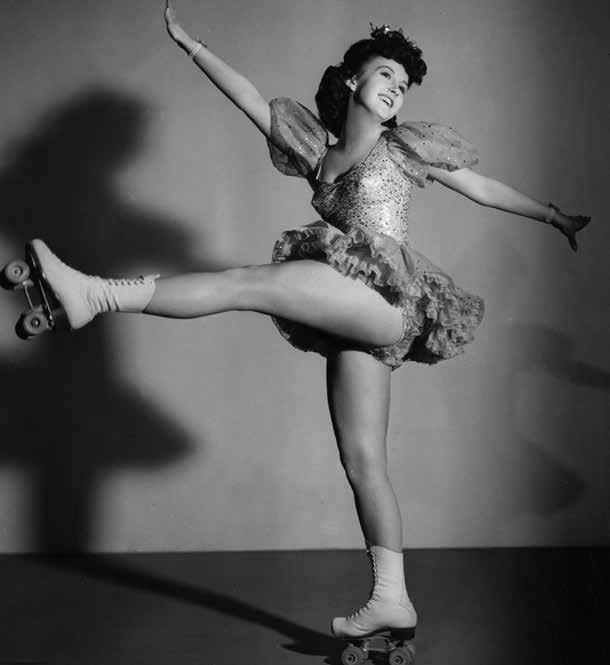
ABOVE RIGHT: Men assembling bombardiers’ and pilots’ enclosures for bomber planes at the Willow Run assembly plant, circa 1943. Several Ford improvements were made on production methods in the subassembly of these enclosures. The fixtures themselves are designed by company engineers. Underframes are made on draw dies in large sections, providing additional strength and fewer operations.
COURTESY DETROIT PUBLIC LIBRARY / #NA032303
RIGHT: Workers assembling wing sections for Helldiver bomber aircraft at Chrysler Corporation’s DeSoto Bomber Plant, circa 1943. COURTESY DETROIT PUBLIC LIBRARY / #NA032386


One of the first manufacturers to establish war production training schools for the conversion of male automobile workers to war production work, the Hudson Motor Car Company led the way in assisting their female automobile employees to prepare for war production jobs, which would release men for vital armament work. Under the plan, more than 1,000 women doing work in the automobile plants were given an opportunity to attend the schools. COURTESY DETROIT PUBLIC LIBRARY / #NA040249
